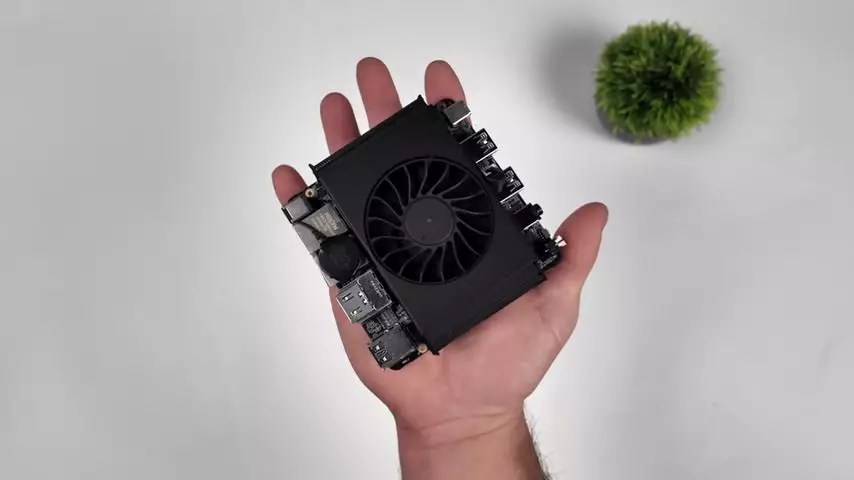The evolution of computing technology has consistently pushed the boundaries of what’s possible. The advent of single board computers (SBCs) marks a significant milestone, particularly in the realm of compact gaming solutions. The latest revelation in this area is a game-changing SBC powered by the Ryzen 7 7840HS APU, featuring RDNA3 architecture—a combination that is stirring excitement among tech enthusiasts and gamers alike. The importance of size and power in computing is becoming increasingly apparent as manufacturers strive to craft devices that are both portable and powerful, challenging preconceived notions about gaming setups.
One of the most exciting aspects of this new X86 SBC is its diminutive size. It’s designed to fit comfortably in the palm of one’s hand, yet it harbors a formidable Ryzen APU and Radeon 780M graphics. This configuration evokes the essence of PC gaming but in a fraction of the traditional space. Historically, gaming enthusiasts have leaned towards separate, more substantial graphics processing units (GPUs) to experience optimal gaming performance, but innovations like this SBC are circumventing that belief. The inclusion of RDNA3 in this APU signals that power can indeed come in small packages, and the compelling gaming performance it provides at 1080p is notable.
Success in resource-intensive games like Doom Eternal, which often demand exacting graphics processing capabilities, illustrates just how far we have come. Achieving an impressive average of 79 fps at medium settings is a clear indicator that the technology inside this compact powerhouse is remarkable. Contrary to traditional expectations, users may find their gaming experience enhanced by this miniature system, offering them a portable solution without sacrificing quality.
While the arrival of this high-performing SBC is exciting, prospective users must recognize that there are trade-offs to embrace. One of the main drawbacks is that the RAM is soldered directly to the board, meaning users have to choose between 16GB and 32GB versions upon purchase, eliminating the flexibility that typically characterizes traditional PC builds. This design choice reflects a wider trend in the industry aimed at keeping costs down while maintaining performance. Additionally, the APU is not the latest version from the Strix Point series, suggesting a conscious decision to balance performance and affordability.
Despite these limitations, the SBC should not be dismissed. Its capacity to run games like Overwatch 2 at a smooth 80-100 fps demonstrates that, even within constraints, performance remains a priority. The capability to upscale graphics and utilize frame generation techniques further enhances the experience, offering users a well-rounded performance that many would not anticipate from an SBC of this size.
This SBC shines with innovative features that promise to improve user experience significantly. A remarkable feature is the inclusion of three M.2 slots, which is surprisingly generous for a board of its stature. This configuration allows for increased expandability, giving users the option to incorporate multiple high-speed storage solutions. A common frustration among gamers is limited capability to upgrade storage in standard micro-ATX boards; this SBC, on the other hand, showcases a thoughtful design that prioritizes flexibility.
Pricing for this SBC is reported to be up to $329, positioning it as an intriguing budget alternative in the gaming market. If marketed correctly, it stands to attract both seasoned gamers who want a portable solution and those new to gaming who may find this miniaturized system more accessible. As it looks to launch via platforms like Indiegogo, initial pricing may fluctuate, but expectations remain high that this product will deliver unmatched value for performance-concentrated systems.
Ultimately, the latest SBC featuring the Ryzen RDNA3 APU serves as a promising frontier in the world of gaming technology. Its ability to deliver impressive performance in a compact design is a testament to how innovation reshapes consumer technology; it highlights an exciting phase where desktop power meets portability. In this era of constant advancement, we can expect such miniaturized solutions to become increasingly prevalent, offering an exhilarating glimpse into the future of gaming as we continue to redefine our relationship with technology. If you’re part of the gaming community or just a technology enthusiast, keep a close eye on developments in this space; the future is undoubtedly bright for miniature gaming.


Leave a Reply